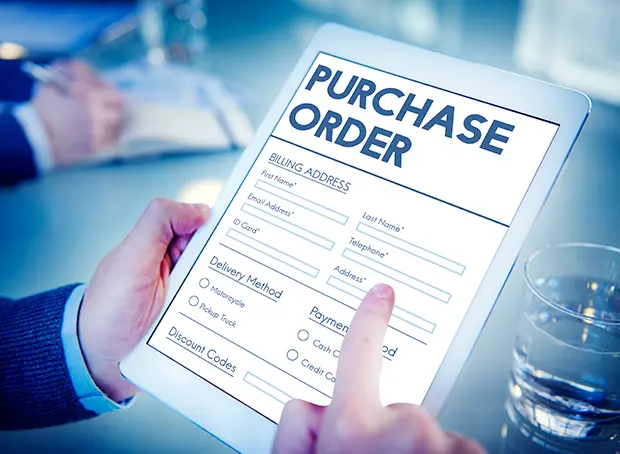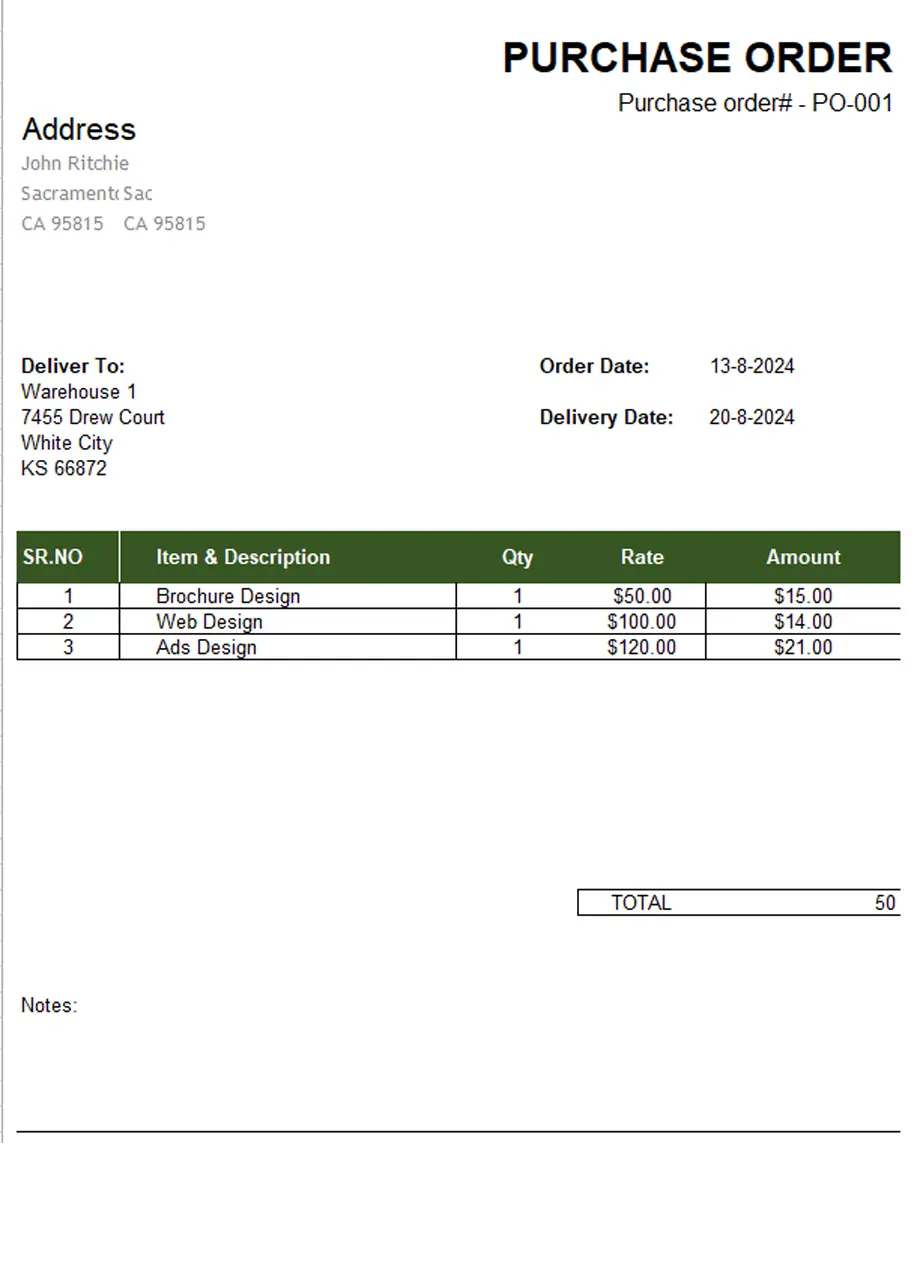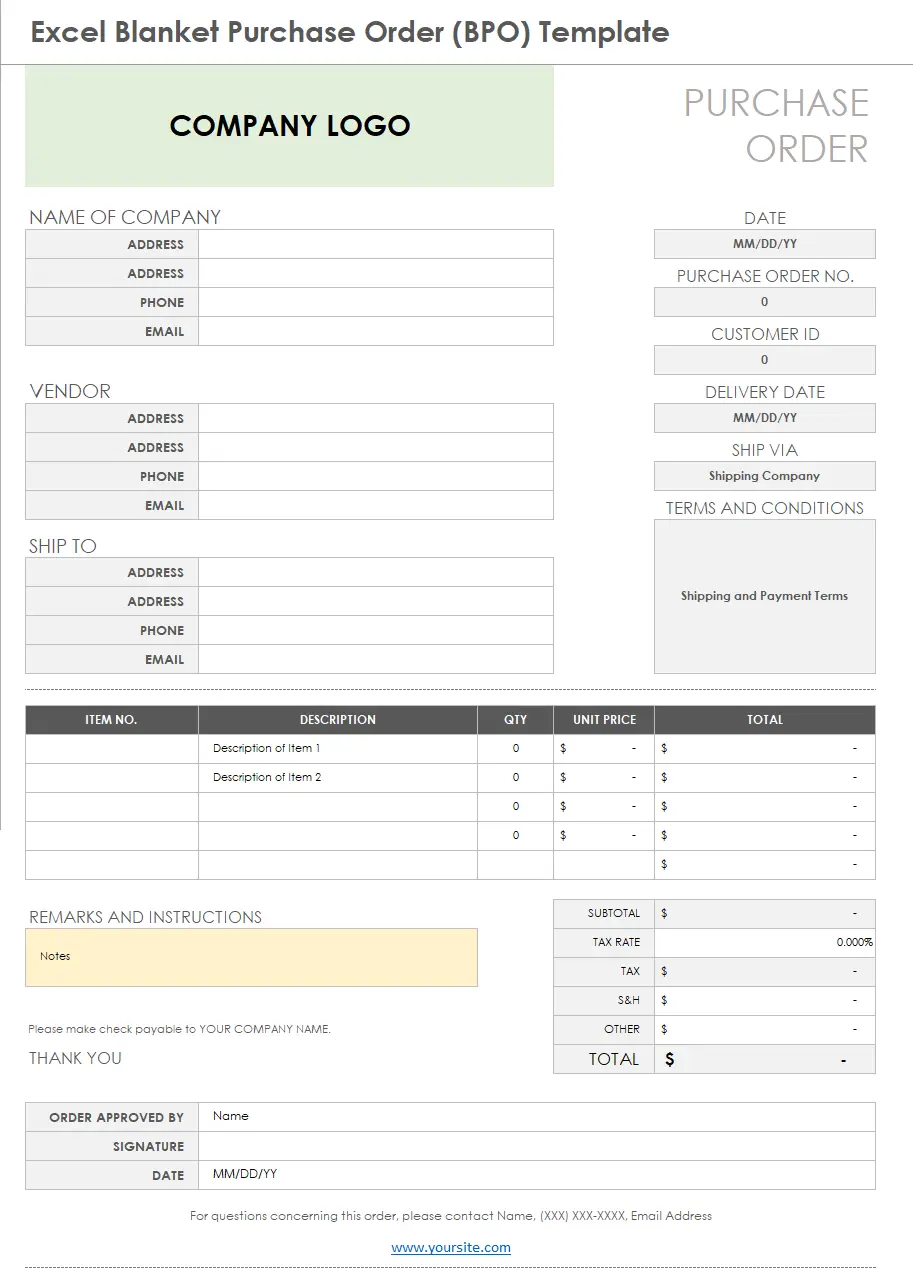
Simple Guide to Purchase Orders (PO): How They Work and Why You Need Them
Have you ever wondered how businesses keep their buying processes organized and efficient? The secret lies in a powerful tool called a purchase order.
Whether you're a small business owner or part of a large corporation, understanding how purchase orders work can revolutionize your procurement process.
In this comprehensive guide, we'll dive deep into the world of purchase orders, exploring their function, creation, and impact on business operations.
What is a Purchase Order?
A purchase order (PO) is a official document issued by a buyer to a seller, detailing the types, quantities, and agreed prices for products or services. It's essentially a contract that forms the basis for a commercial transaction between two parties.
But why is this document so important? Let's break it down:
- It provides a clear record of the transaction
- It helps in budgeting and financial planning
- It serves as a legal document in case of disputes
- It streamlines the procurement process
Now that we have a basic understanding, let's explore how a purchase order actually works in practice.
How Does a Purchase Order Work?
The purchase order process typically follows these steps:
- The buyer identifies a need for goods or services
- The buyer creates and sends a purchase order to the seller
- The seller reviews the purchase order and either accepts or rejects it
- If accepted, the seller fulfills the order and sends an invoice
- The buyer receives the goods or services and compares them to the PO
- The buyer pays the invoice if everything matches
This process might seem straightforward, but each step involves crucial details that can make or break a smooth transaction. Let's dive deeper into how to create a purchase order.
How to Create a Purchase Order
Creating an effective purchase order involves several key elements. Let's explore what information should be included and what a typical purchase order looks like.
What information should be on a purchase order?
A comprehensive purchase order should include:
- PO number (for tracking)
- Date of issue
- Buyer's company name and contact information
- Seller's company name and contact information
- Delivery address and date
- Payment terms
- Item descriptions, quantities, and prices
- Total cost
What Does a Purchase Order Look Like?
A purchase order is typically structured as a table or form. Here's a simple example:
|
Purchase Order |
|
|
PO Number: |
12345 |
|
Date: |
July 29, 2024 |
|
Buyer: |
ABC Company |
|
Seller: |
XYZ Supplies |
|
Item |
Quantity |
Unit Price |
Total |
|
Widget A |
100 |
$10 |
$1,000 |
|
Widget B |
50 |
$20 |
$1,000 |
|
Total: |
$2,000 |
||
Purchase Order Template with example
While the above is a basic example, many businesses use more detailed templates. These often include additional fields such as shipping method, tax information, and special instructions.
Types of Purchase Orders
Not all purchase orders are created equal. Here are some common types:
- Standard POs: One-time orders for specific items
- Blanket POs: Long-term agreements for multiple deliveries
- Contract POs: Used when a formal contract is in place
- Digital POs: Electronic versions that streamline the process
Legal aspects of purchase orders
It's crucial to understand that a purchase order, once accepted by the seller, becomes a legally binding contract. This means both parties are obligated to fulfill their parts of the agreement. In case of disputes, the purchase order serves as a key piece of evidence.
Purchase order systems and tools
Many businesses are moving away from paper-based systems to electronic purchase order tools. These systems can:
- Automate the creation and sending of POs
- Track the status of orders in real-time
- Integrate with accounting and inventory systems
- Provide analytics and reporting features
Popular tools include SAP Ariba, Oracle Procurement Cloud, and Coupa. However, the choice of tool often depends on the size and needs of the business.
Purchase order automation
Automation is revolutionizing the purchase order process. By leveraging artificial intelligence and machine learning, businesses can:
- Automatically generate POs based on inventory levels
- Match POs with invoices and receipts
- Flag discrepancies for review
- Predict future purchasing needs
This not only saves time but also reduces errors and improves overall efficiency.
What are the problems do purchase orders solve?
Purchase orders address several key challenges in the procurement process:
- Lack of clarity: POs provide clear, written specifications for orders
- Budget overruns: They help track and control spending
- Audit difficulties: POs create a paper trail for easy auditing
- Legal disputes: They serve as legal documents in case of disagreements
- Inefficient processes: POs streamline the ordering and approval process
By addressing these issues, purchase orders play a crucial role in maintaining smooth business operations.
Benefits of Using Electronic Purchase Orders
While traditional paper POs are still in use, electronic purchase orders offer numerous advantages:
- Speed: Electronic POs can be created and sent instantly
- Accuracy: Digital systems reduce manual entry errors
- Cost-effective: They eliminate paper and postage costs
- Easy tracking: Electronic systems allow real-time order tracking
- Integration: They can seamlessly connect with other business systems
- Environmental friendly: Reducing paper use is good for the planet
These benefits make electronic POs an attractive option for businesses of all sizes.
Advantages and Disadvantages of a purchase order
Like any business tool, purchase orders have their pros and cons. Let's examine them:
Advantages:
- Provides clear documentation of orders
- Helps in budgeting and financial planning
- Reduces errors in ordering
- Serves as a legal document
- Streamlines the procurement process
Disadvantages:
- Can be time-consuming to create and process
- May be unnecessary for small, frequent purchases
- Requires a system for tracking and managing
- Can create additional paperwork
Despite these potential drawbacks, the advantages of using purchase orders often outweigh the disadvantages for most businesses.
When to Use a Purchase Order vs. an Invoice
While purchase orders and invoices are both important documents in the buying process, they serve different purposes:
- A purchase order is issued by the buyer to order goods or services
- An invoice is issued by the seller to request payment for goods or services delivered
Use a purchase order when you want to place an order, and expect an invoice when it's time to pay for the received goods or services.
When to Use a Purchase order vs. purchase requisition
Purchase orders and purchase requisitions are often confused, but they're distinct documents:
- A purchase requisition is an internal document requesting approval to make a purchase
- A purchase order is sent to the vendor to actually make the purchase
Use a purchase requisition when you need internal approval before making a purchase, and a purchase order when you're ready to place the order with the vendor.
When to Use a Purchase order vs sales order
Purchase orders and sales orders are two sides of the same coin:
- A purchase order is created by the buyer and sent to the seller
- A sales order is created by the seller in response to a purchase order
As a buyer, you'll create purchase orders. If you're the seller, you'll receive purchase orders and create corresponding sales orders.
Conclusion
Purchase orders are a fundamental tool in the world of business procurement. They provide clarity, control, and legal protection in the buying process. While they may seem like simple documents, their impact on business operations is significant. As we move further into the future, electronic purchase orders and automation are revolutionizing how businesses manage their procurement processes.
Whether you're a small business owner just starting out or a procurement professional in a large corporation, understanding and effectively using purchase orders can streamline your operations, reduce errors, and ultimately contribute to your business's success.
FAQs
Is a purchase order a contract?
Yes, once accepted by the seller, a purchase order becomes a legally binding contract between the buyer and seller.
Why automate the purchase order process?
Automation reduces errors, saves time, improves accuracy, and provides better tracking and reporting capabilities.
Should your organization use purchase orders?
If your organization regularly purchases goods or services, especially in large quantities or values, using purchase orders can greatly improve your procurement process.
How can Procurify streamline your purchase order process?
Procurify is a procurement software that can automate your purchase order process, providing features like real-time tracking, approval workflows, and integration with accounting systems.
What's the difference between a purchase order and a blanket purchase order?
A standard purchase order is for a one-time purchase, while a blanket purchase order is a long-term agreement for multiple deliveries over a set period.

 Rohit Kapoor
Rohit Kapoor




